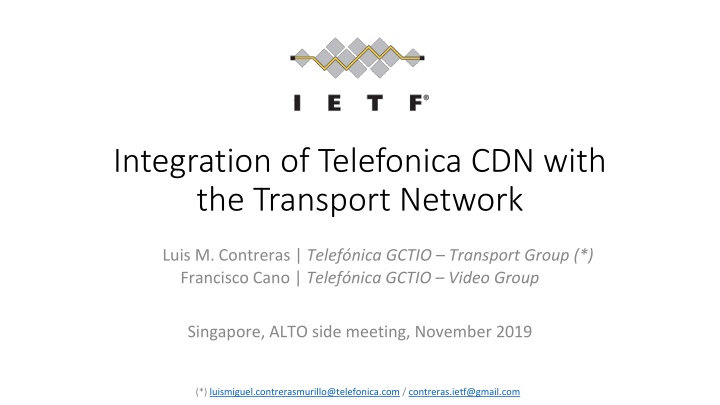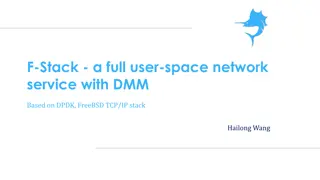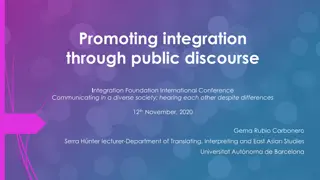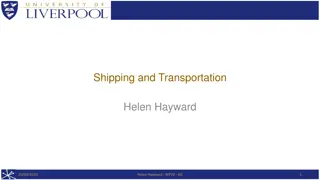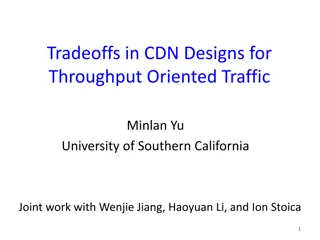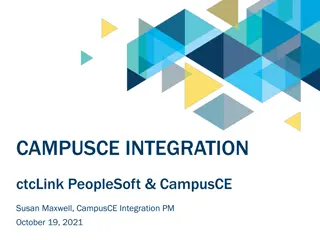Integration of Telefonica CDN for Efficient Network Delivery
Telefonica is integrating its CDN with the transport network to enhance content delivery efficiency and network awareness. By making the CDN transport network aware, Telefonica aims to improve adaptability to network changes and provide real-time insights for optimal content delivery. The integration enables automatic acquisition of network topology, dynamic content delivery adjustments based on network events, and adaptive delivery based on access network types.
Uploaded on Feb 27, 2025 | 1 Views
Download Presentation

Please find below an Image/Link to download the presentation.
The content on the website is provided AS IS for your information and personal use only. It may not be sold, licensed, or shared on other websites without obtaining consent from the author.If you encounter any issues during the download, it is possible that the publisher has removed the file from their server.
You are allowed to download the files provided on this website for personal or commercial use, subject to the condition that they are used lawfully. All files are the property of their respective owners.
The content on the website is provided AS IS for your information and personal use only. It may not be sold, licensed, or shared on other websites without obtaining consent from the author.
E N D
Presentation Transcript
Integration of Telefonica CDN with the Transport Network Luis M. Contreras | Telef nica GCTIO Transport Group (*) Francisco Cano | Telef nica GCTIO Video Group Singapore, ALTO side meeting, November 2019 (*) luismiguel.contrerasmurillo@telefonica.com / contreras.ietf@gmail.com
Background Telef nica is an international telecom operator with presence in 15 countries in Europe and Latin America (+ a Tier-1 international carrier) Multiservice Networks: fixed, mobile, enterprise, etc In house development of CDN solution (TCDN) Distribution of content associated to the Telefonica video services (Movistar+ & Movistar Play) Delivery of video in an OTT fashion for customers internal and external to Telef nica Networks State-of-the-art request routing logic considering multiple information in order to maximize the video distribution efficiency E.g., IP prefix requesting the content and the status of the deliver end points By now, manual feed of PIDs and assigned network nodes ALTO side meeting, IETF#106, Singapore
Rationale for making TCDN Transport Network aware The main objective of TCDN is to provide an efficient delivery of the contents within the network Content delivery is based on a (semi-)static view up to now, decoupled from the real situation In order to make a complete and efficient usage of the network, TCDN would benefit from a real time knowledge of the status and characteristics of the Network For instance, delivery decisions in TCDN allows to quickly adapt to changes (e.g., topology changes, congestion, etc.) ALTO side meeting, IETF#106, Singapore
Use cases enabled by a better integration between TCDN and the Transport Network Automatic acquisition of network topology, eliminating manual upload of network topology information and its periodic update Awareness of network events such as congestion or network incidents which can allow TCDN to trigger actions for the content delivery for mitigating impacts in both network and customers E.g., Elastic management of the bitrate for certain contents/users Dynamic instantiation of new streamers (localized delivery) by integration with orchestration solutions Adaptation of content delivery as function of the Access Network type (fixed, mobile, etc). ALTO side meeting, IETF#106, Singapore
How to make it? Integration of ALTO and Transport Network to assist TCDN decisions RFC7752, North-Bound Distribution of Link-State and Traffic Engineering (TE) Information Using BGP e.g. ALTO server using topology and TE information ALTO protocol BGP-LS NLRI ALTO Server BGP Speaker Client ALTO abstract topology (Network Maps) can be automatically generated from the physical Network topology, allowing also the application of policies. Information about IP prefixes and TE can be obtained. Prefixes can be distributed by BGP while TE information can be obtained from the IGP protocol (OSPF / IS-IS). BGP-LS provides a single interface for exposing all that information to the ALTO Server ALTO side meeting, IETF#106, Singapore
Taking action PoC planned in Global CTIO labs to explore the integration of the Transport Network, ALTO and TCDN Next step is to trial the solution in a real network (Telefonica Spain) Feedback from this session is very welcomed! ALTO side meeting, IETF#106, Singapore
